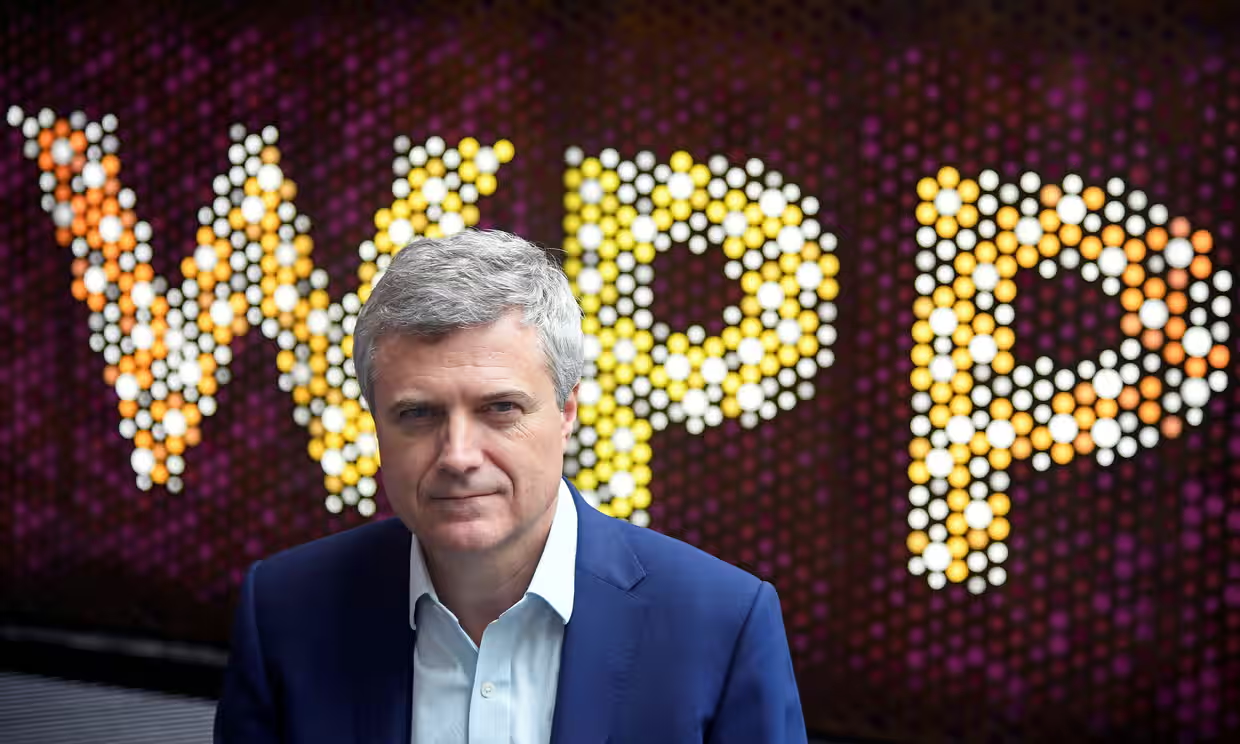CEO of world’s biggest ad firm targeted by deepfake scam
Fraudsters impersonated WPP’s CEO using a fake Whatsapp account, a voice clone and YouTube footage used in a virtual meet
The head of the world’s biggest advertising group was the target of an elaborate deepfake scam that involved an artificial intelligence voice clone. The CEO of WPP, Mark Read, detailed the attempted fraud in a recent email to leadership, warning others at the company to look out for calls claiming to be from top executives.
Fraudsters created a WhatsApp account with a publicly available image of Read and used it to set up a Microsoft Teams meeting that appeared to be with him and another senior WPP executive, according to the email obtained by the Guardian. During the meeting, the imposters deployed a voice clone of the executive as well as YouTube footage of them. The scammers impersonated Read off-camera using the meeting’s chat window. The scam, which was unsuccessful, targeted an “agency leader”, asking them to set up a new business in an attempt to solicit money and personal details.
“Fortunately the attackers were not successful,” Read wrote in the email. “We all need to be vigilant to the techniques that go beyond emails to take advantage of virtual meetings, AI and deepfakes.”
A WPP spokesperson confirmed the phishing attempt bore no fruit in a statement: “Thanks to the vigilance of our people, including the executive concerned, the incident was prevented.” WPP did not respond to questions on when the attack took place or which executives besides Read were involved.
Once primarily a concern related to online harassment, pornography and political disinformation, the number of deepfake attacks in the corporate world has surged over the past year. AI voice clones have fooled banks, duped financial firms out of millions and put cybersecurity departments on alert. In one high-profile example, an executive of the defunct digital media startup Ozy pled guilty to fraud and identity theft after it was reported he used voice-faking software to impersonate a YouTube executive in a bid to fool Goldman Sachs into investing $40m in 2021.
The attempted fraud on WPP likewise appeared to use generative AI for voice cloning, but also included simpler techniques like taking a publicly available image and using it as a contact display picture. The attack is representative of the many tools that scammers now have at their disposal to mimic legitimate corporate communications and imitate executives.
“We have seen increasing sophistication in the cyber-attacks on our colleagues, and those targeted at senior leaders in particular,” Read said in the email.
Read’s email listed a number of bullet points to look out for as red flags, including requests for passports, money transfers and any mention of a “secret acquisition, transaction or payment that no one else knows about”.
“Just because the account has my photo doesn’t mean it’s me,” Read said in the email.
WPP, a publicly traded company with a market cap of around $11.3bn, also stated on its website that it has been dealing with fake sites using its brand name and is working with relevant authorities to stop the fraud.
“Please be aware that WPP’s name and those of its agencies have been fraudulently used by third parties – often communicating via messaging services – on unofficial websites and apps,” a pop-up message on the company’s contact page states.
Many companies are grappling with the boom of generative AI, pivoting resources toward the technology while simultaneously facing its potential harms. WPP announced last year that it was partnering with chip-maker Nvidia to create advertisements with generative AI, touting it as a sea change in the industry.
“Generative AI is changing the world of marketing at incredible speed. This new technology will transform the way that brands create content for commercial use,” Read said in a statement last May.
In recent years, low-cost audio deepfake technology has become widely available and far more convincing. Some AI models can generate realistic imitations of a person’s voice using only a few minutes of audio, which is easily obtained from public figures, allowing scammers to create manipulated recordings of almost anyone.
The rise of deepfake audio has targeted political candidates around the world, but also crept into other less prominent targets. A school principal in Baltimore was put on leave this year over audio recordings that sounded like he was making racist and antisemitic comments, only for it to turn out to be a deepfake perpetrated by one of his colleagues. Bots have impersonated Joe Biden and former presidential candidate Dean Phillips.
I hope you appreciated this article. Before you move on, I wanted to ask if you would consider supporting the Guardian’s journalism as we enter one of the most consequential news cycles of our lifetimes in 2024.
With the potential of another Trump presidency looming, there are countless angles to cover around this year’s election – and we’ll be there to shed light on each new development, with explainers, key takeaways and analysis of what it means for America, democracy and the world.
From Elon Musk to the Murdochs, a small number of billionaire owners have a powerful hold on so much of the information that reaches the public about what’s happening in the world. The Guardian is different. We have no billionaire owner or shareholders to consider. Our journalism is produced to serve the public interest – not profit motives.
And we avoid the trap that befalls much US media: the tendency, born of a desire to please all sides, to engage in false equivalence in the name of neutrality. We always strive to be fair. But sometimes that means calling out the lies of powerful people and institutions – and making clear how misinformation and demagoguery can damage democracy.
From threats to election integrity, to the spiraling climate crisis, to complex foreign conflicts, our journalists contextualize, investigate and illuminate the critical stories of our time. As a global news organization with a robust US reporting staff, we’re able to provide a fresh, outsider perspective – one so often missing in the American media bubble.
Around the world, readers can access the Guardian’s paywall-free journalism because of our unique reader-supported model. That’s because of people like you. Our readers keep us independent, beholden to no outside influence and accessible to everyone – whether they can afford to pay for news, or not.

